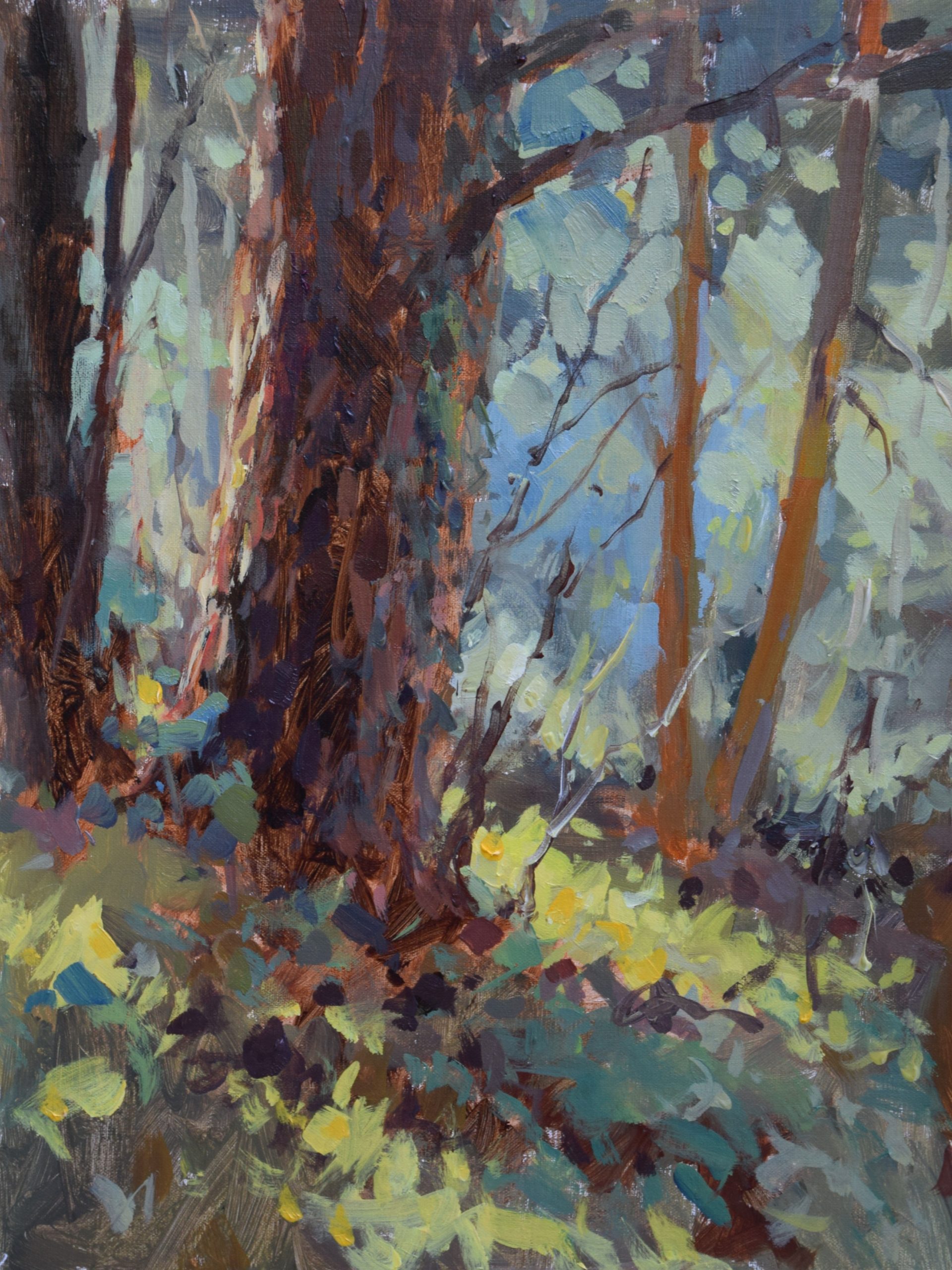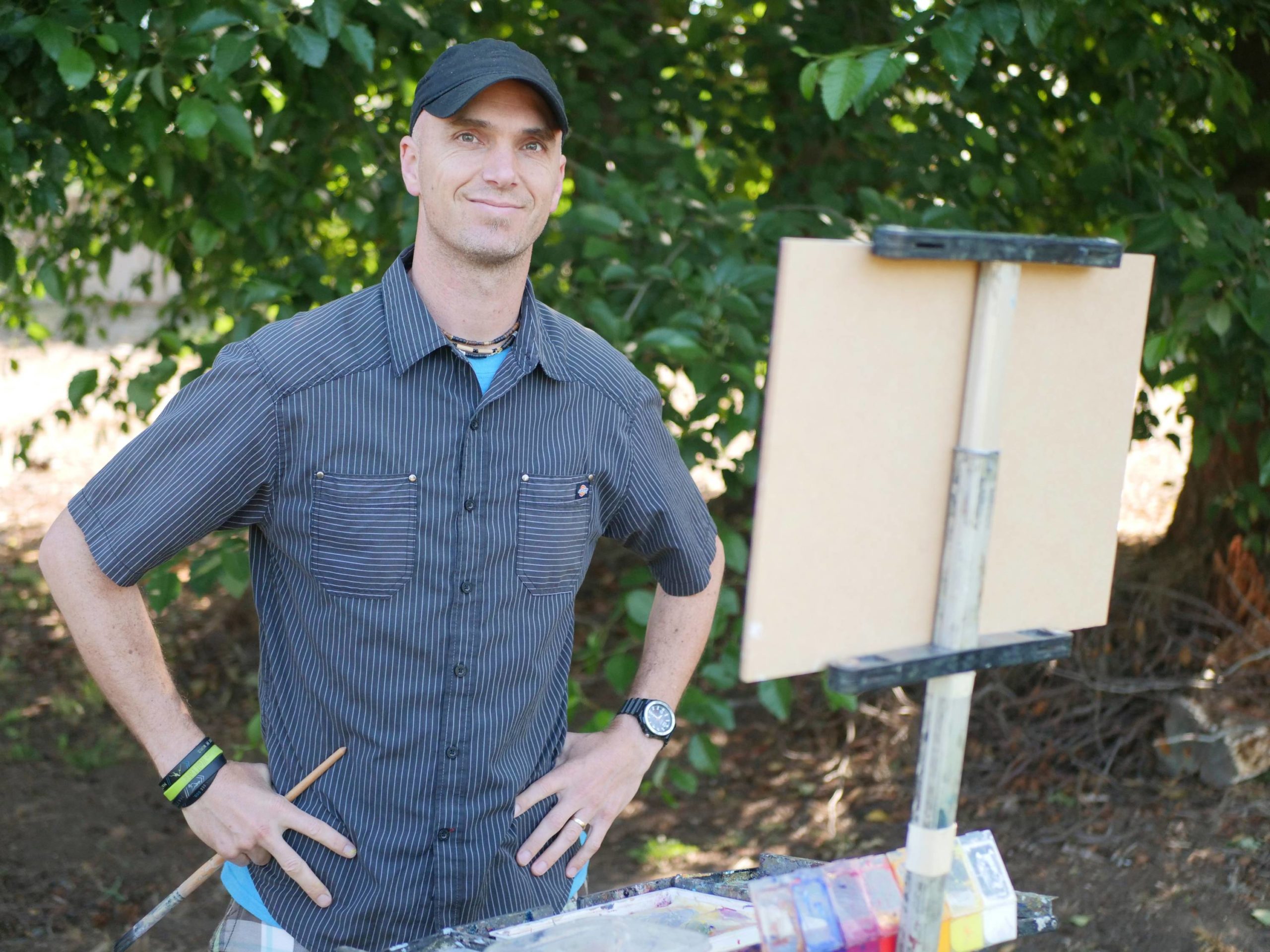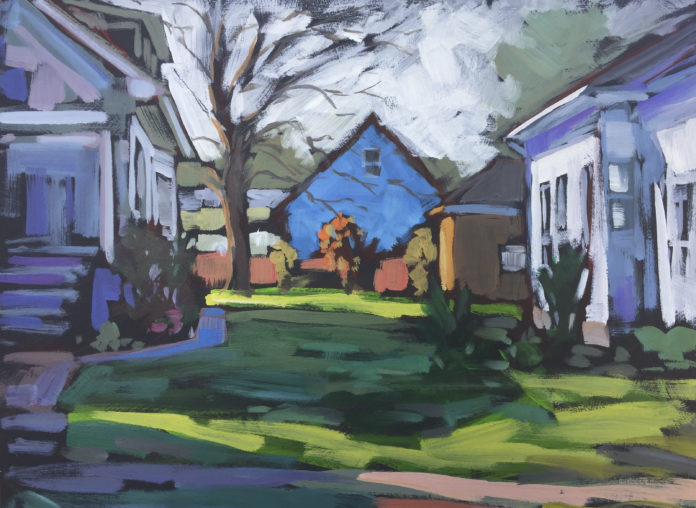Plein air painter and fourth-generation artist Jed Dorsey shares his tips for getting brilliant color into your next landscape painting.
On Painting a Colorful Plein Air Landscape
By Jed Dorsey
The painting shown at the top, “One Bright Morning,” was one of those mornings where the sunlight was brilliant, beautiful, and quickly changing. I set up and just started moving, because I knew I didn’t have long. The key in these situations is to know what is essential and what isn’t.
I focused on getting the main shapes fairly accurate, and then just worked on capturing the feeling of the sunshine and shadows. I had opted for a dark-toned canvas, so every color I applied was moving up the value scale. The blue of the house in the back was easy to exaggerate, and it allowed me to push the other colors further also. While there is always something I’d like to fix, I often love the spontaneous feeling of these paintings done under a time crunch.

In this painting, “Of Sun & Shadows,” I pushed colors in a more subtle way. There wasn’t much distance in the scene, so I exaggerated the blue grays of the background to create more depth. I also subdued some of the lighted areas of the background to accomplish the same feeling.
7 Tips for Painting Vibrant Color
- Call your painting a study. When you think of what you’re working on as a study instead of a painting, it can encourage a sense of freedom. You’re not trying to create a masterpiece; you’re just trying to learn.
- Use a brightly toned canvas. This can be the easiest way to make your paintings sparkle, because it doesn’t necessarily require a change in the way you work. Simply let some of the underpainting shine through.
- Exaggerate the subtleties. Look closely at the scene. Is there a blue violet from the sky reflected in the ground shadows? Is there a colorful tree, house, or boat? Find the colors that are already there and exaggerate them a little.
- Keep the value; change the hue. In my opinion, a color’s inherent value is its most important attribute. This means you can experiment and change the hue and saturation of colors quite a bit as long as you keep the values correct.
- Add variety to each color. A painting that only has fully saturated colors can be overwhelming. Placing dull, grayed-down colors next to the cleaner, more saturated colors also creates variety and makes the saturated areas appear more colorful.
- Use gray to give the eye a place to rest. Making a portion of the painting (the sky, for instance) a simple neutral grayish color provides a resting place for the viewer’s eye and can help bring a sense of peace to the scene.
- Let color have its voice. Georgia O’Keeffe said, “I found I could say things with color and shapes that I couldn’t say any other way — things I had no words for.” What do you feel when you see a scene you love? What do you want to say about it? How can you use color to say what words can’t?

Visit EricRhoads.com to find out all the amazing opportunities for artists through Streamline Publishing, including:
– Online art conferences such as Plein Air Live
– New video workshops for artists
– Incredible art retreats
– Educational and fun art conventions, and much more.
> Subscribe to Plein Air Today, a free newsletter for artists
> Subscribe to PleinAir Magazine so you never miss an issue






Very helpful tips, Jed. Just what I needed to hear. Thank you!
I find your paintings all that and more.